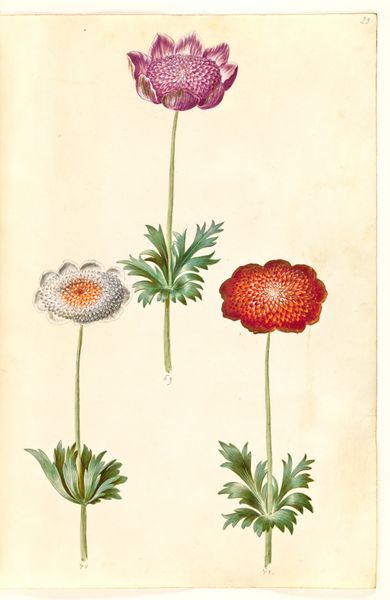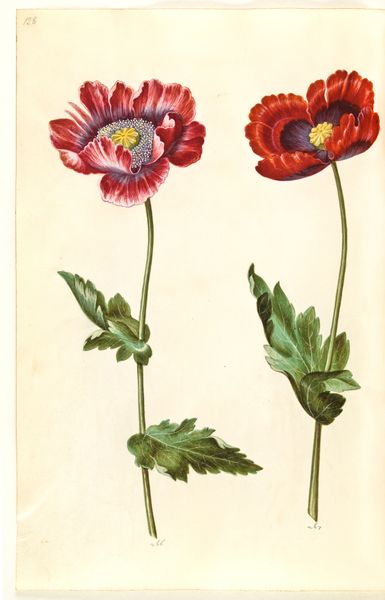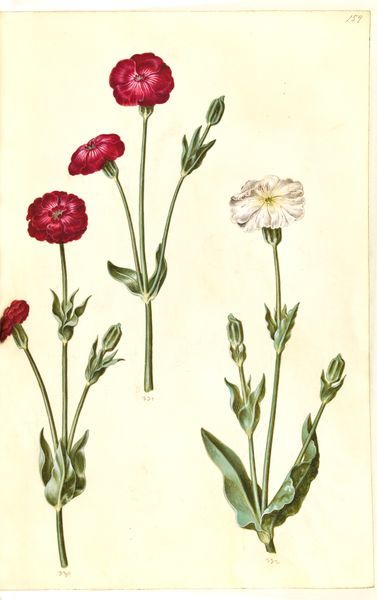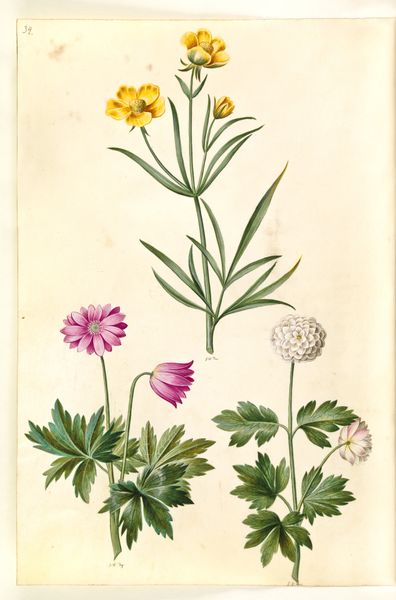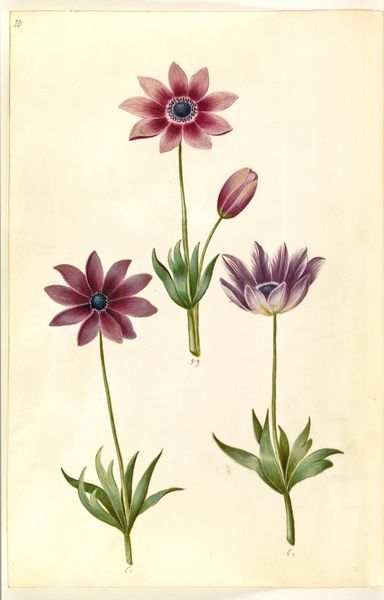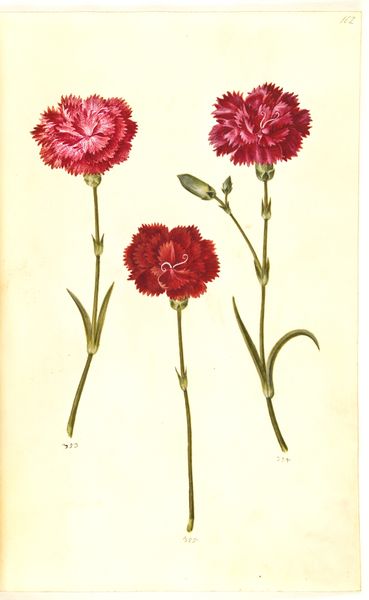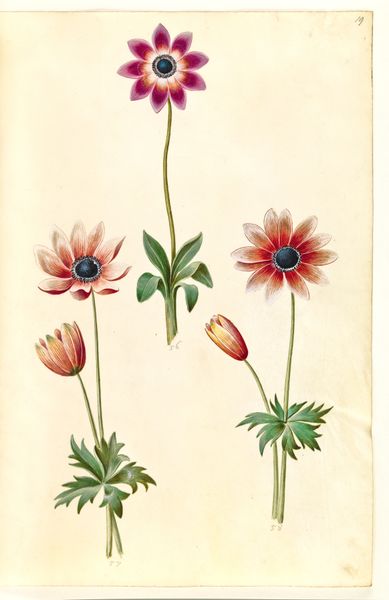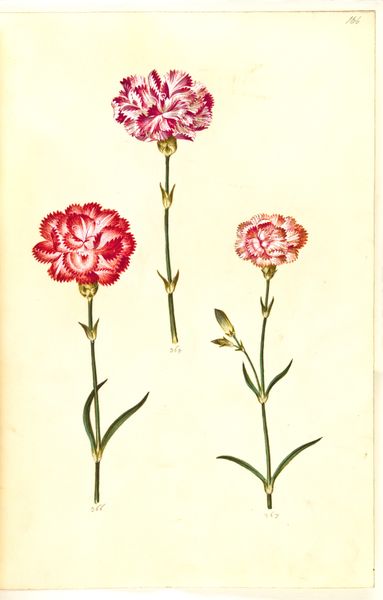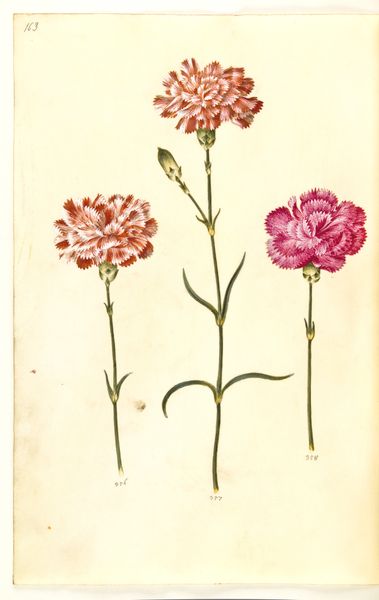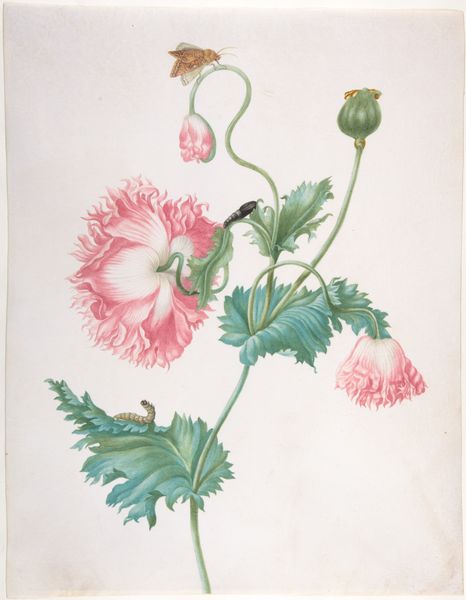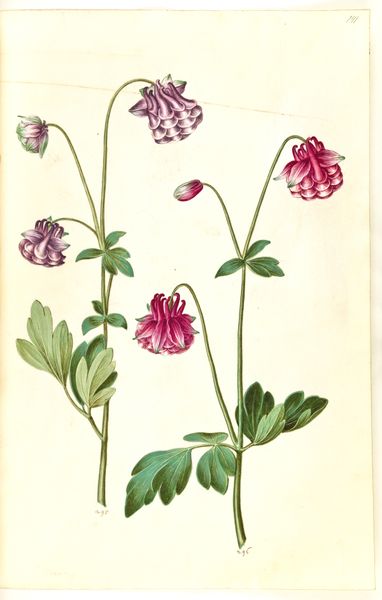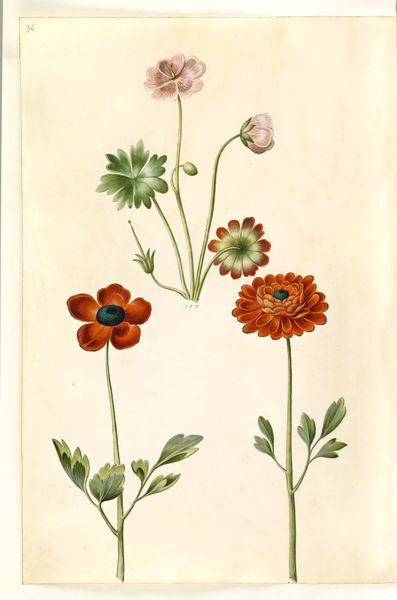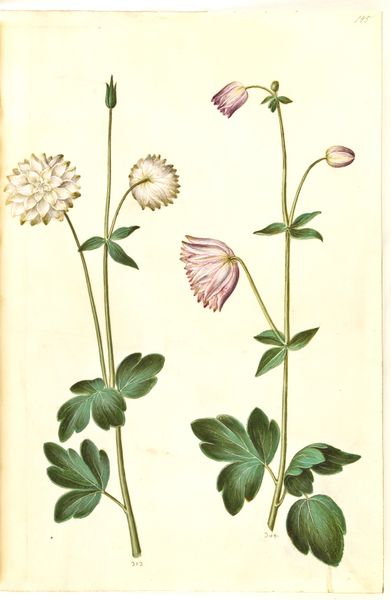
drawing, painting, gouache
#
drawing
#
dutch-golden-age
#
painting
#
gouache
#
11_renaissance
#
botanical art
#
watercolor
#
realism
Dimensions: 375 mm (height) x 265 mm (width) x 85 mm (depth) (monteringsmaal), 358 mm (height) x 250 mm (width) (bladmaal)
Editor: This is "Anemone coronaria (fransk anemone)" by Hans Simon Holtzbecker, created sometime between 1635 and 1664. It seems to be a botanical illustration using gouache and watercolor. I’m struck by the stark simplicity and the artist's attention to detail, especially in the flower heads. How do you interpret this work? Curator: Beyond its aesthetic qualities, it's essential to situate this image within the context of 17th-century European expansion and scientific revolution. Botanical illustrations like these weren’t simply about capturing beauty. They were instrumental in categorizing and understanding the natural world, often for colonial and commercial purposes. Think about who commissioned this piece and why. How might the artist's choices in rendering these anemones reflect the societal values of the time? Editor: That's a good point. I hadn't considered the link to colonialism. I was just appreciating the artistry! So, are you saying that even a seemingly innocuous flower painting could have been used to further colonial ambitions? Curator: Precisely. These images helped facilitate the movement of plants and knowledge across continents, which invariably served specific power structures. We need to consider how "scientific" images can reflect the gaze and priorities of the powerful. The beauty distracts from the botanical surveying inherent within. It's worth pondering if these meticulously detailed illustrations helped to strip away the local, indigenous knowledge connected with them. Does seeing the painting through that lens alter your understanding of it? Editor: Absolutely, it does. It transforms it from a beautiful drawing into a document that participates in a larger, and perhaps problematic, narrative. I’ll never look at a botanical illustration the same way again. Curator: Indeed. Recognizing the intertwined histories of art, science, and colonialism empowers us to critically examine visual culture and understand its impact on our world today.
Comments
No comments
Be the first to comment and join the conversation on the ultimate creative platform.
